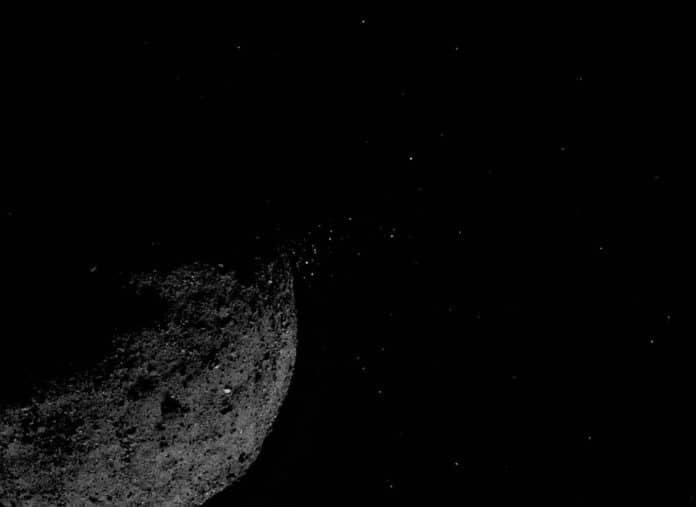Our expectations about the asteroid’s surface were utterly wrong.
The latest findings about Bennu’s surface surprised scientists. The particles making up Bennu’s exterior are loosely packed and lightly bound to each other.
NASA’s OSIRIS-REx spacecraft arrived at Bennu in December 2018. Instead of the smooth, sandy beach, they had expected based on observations from Earth- and space-based telescopes, the OSIRIS-REx team discovered a surface scattered with pebbles. Additionally, they found that Bennu was spewing rock shards into space.
Later in October 2020, the spacecraft collected a sample from asteroid Bennu. Recently, after analyzing the data gathered when the spacecraft collected the sample, scientists found that: The spacecraft would have sunk into Bennu had it not fired its thrusters to back away immediately after it grabbed dust and rock from the asteroid’s surface.
Kevin Walsh, a member of the OSIRIS-REx science team from Southwest Research Institute, which is based in San Antonio, said, “If Bennu were completely packed, that would imply nearly solid rock, but we found a lot of void space in the surface.”
“Our expectations about the asteroid’s surface were completely wrong.”
“The latest hint that Bennu was not what it seemed came after the OSIRIS-REx spacecraft picked up a sample and beamed stunning, close-up images of the asteroid’s surface to Earth. We saw a huge wall of debris radiating from the sample site. We were like, ‘Holy cow!'”
Given how lightly the spaceship had landed, scientists were perplexed by the numerous pebbles strewn around. The spaceship left a 26-foot-wide (8-meter) wide crater that was even more unusual.
Lauretta said, “Every time we tested the sample pickup procedure in the lab, we barely made a divot. The mission team decided to send the spacecraft back to take more photographs of Bennu’s surface to see how big of a mess we made.”
Mission scientists examined the amount of debris at the sample site called “Nightingale,” visible before and after images of the sample site. Additionally, they examined the acceleration information gathered during the spacecraft’s touchdown. This information showed that OSIRIS-REx encountered little resistance as it touched the asteroid’s surface.
Ron Ballouz, an OSIRIS-REx scientist based at the Johns Hopkins Applied Physics Laboratory in Laurel, Maryland, said, “By the time we fired our thrusters to leave the surface, we were still plunging into the asteroid.”
Scientists ran several computer simulations to deduce Bennu’s density and cohesion based on spacecraft images and acceleration information. They varied the surface cohesion properties in each simulation until they found the one that most closely matched their real-life data.
Now, this precise information about Bennu’s surface can help scientists better interpret remote observations of other asteroids, which could be helpful in designing future asteroid missions and developing methods to protect Earth from asteroid collisions.
Patrick Michel, an OSIRIS-REx scientist and director of research at the Centre National de la Recherche Scientifique at Côte d’Azur Observatory in Nice, France, said, “I think we’re still at the beginning of understanding what these bodies are because they behave in very counterintuitive ways.”
Journal References:
- Kevin J. Walsh, Ronald Louis Ballouz, et al. Near-zero cohesion and loose packing of Bennu’s near subsurface revealed by spacecraft contact. Science Advances. 7 Jul 2022. Vol 8, Issue 27; DOI: 10.1126/sciadv.abm6229
